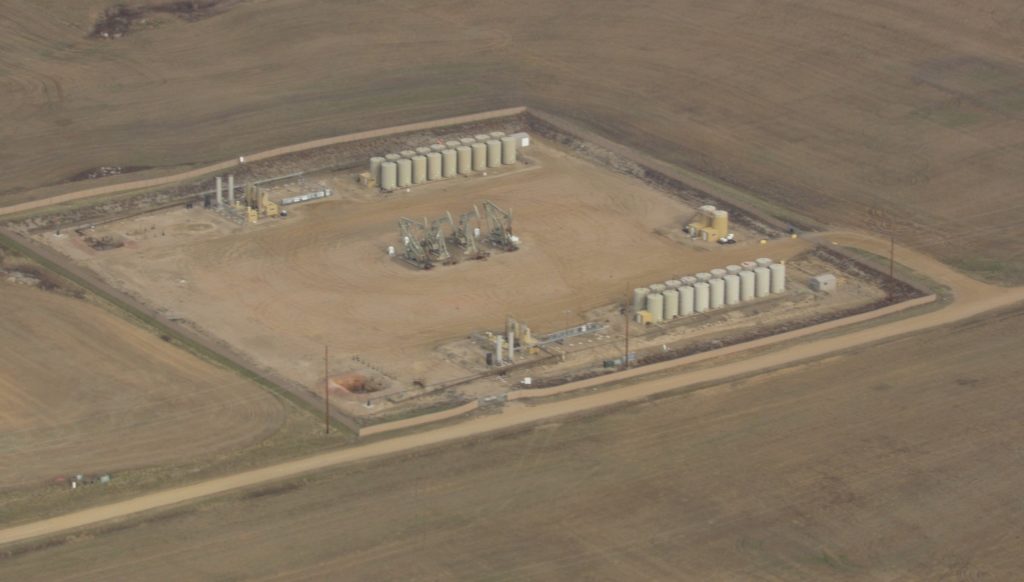
What are the prospects for drilling and oil production in the Bakken oil field in North Dakota? Particularly in regards to Williams County, what does the near future hold?
With all the turmoil in the oil industry lately, haven’t had much discussion here on what the future holds.
The Million Dollar Way blog had a great commentary by Bruce Oksol on 4/8/21: Idle Rambling In Response To A Reader’s Question.
The reader asked if there is likely to be any future development around Williams County, or on the other hand, if there is any acreage left to develop.
First point in the article is the level of development (drilling new wells) depends on the price of oil.
My comment: There is some price point at which it makes more sense to leave oil in the ground. The oil isn’t going anywhere in the next, oh, couple of centuries. There is a higher price point at which there will be a reasonable number of wells drilled on an ongoing basis. There’s an even higher price point at which every rig in the country will be drilling every day.
Back in the early ’10s, oil was at that extremely high point where every oil rig was drilling and anyone who could stand upright would get a job in the oil patch merely by showing up and asking.
Now we’re at the price point where there will be several more or several less rigs drilling based on expectations for oil prices over the next month or two.
Article at MDW says there will not be a lot of drilling activity over the next few years.
In terms of the future however, it is a different story.
What happens if price of West Texas Intermediate goes to $60 a barrel?
The article says the wells you can see above ground today in Williams County reaching into the middle Bakken are only 30% of all the wells that will eventually be drilled. In addition, only 10% of all the Three Forks layer wells that will ultimately drilled have already been drilled.
Let me rephrase that:
- For every three wells that have already been drilled in the middle Bakken, there will be seven more drilled eventually.
- For every one well that has already been drilled in the lower Three Forks layer, there will be nine more wells drilled eventually.
In other words, over the next several decades there is massively more drilling that will take place than has already been done. For every pumpjack you see today, there might be three or four more in a few decades.
The extended point is that at $70, the value of oil is so high that producers will go back and re-frak their wells to dramatically increase production. Results are showing that newer techniques (more stages and more sand) will produce a lot more oil.

Analogy to farming
Mr. Oksol draws a fascinating analogy to farming. The reader’s question is comparable to asking whether there will be any more farming in Williams County.
Before the Homestead Act of 1862 there was very little farming anywhere west of the Mississippi. The Homestead Act generated a massive burst in farming as people wanting to get a new start in life laid claim to a section of land and started breaking dirt. Slowly the railroads showed up. Slowly the grain elevators, small towns, and co-ops developed.
In the oil analogy we would compare that to infrastructure, such as natural gas processing plants, pipelines, and unit trains with 100 full oil cars.
Early in the 1900s the farmland was all claimed, in other words it was tapped out. Sort of like oil leases today – all the land that can be leased is leased and has at least one well on it.
After all the farmland was claimed in the Dakotas, was there any more farming?
Obviously yes.
In fact, farmers started using new technology. Tractors replacing horses. More powerful tractors. Specialized combines and other equipment. Better use of crop rotation and storage. Better seed. Wide use of herbicides and insecticides.
As a result the crop yield has exploded. Productivity on a farm has exploded. I have described at length on my Ancient Finance blog what life was like when my father was growing up on a farm when he was a child in southeastern South Dakota.
Before World War II, it took grandpa, grandma, and eight children to run 80 acres of farmland. (Maybe it was 180 or 360, but I haven’t been able to confirm that.) Today, my cousin’s husband and their son run over 1,000 acres of farmland by themselves. Oh yeah, they both have another job, so farming is not a full-time, year-round job for either of them.
Manufacturing instead of land rush
Didn’t do a search to find an exact time, but I distinctly recall Mr. Oksol saying repeatedly around five years ago or so that oil production in North Dakota was moving into the “manufacturing” stage.
Implication of that comment is instead of going crazy trying to lease up all the land and get one well drilled before the lease option expires (if a well is not operating within a certain time the lease terminates), the oil industry was moving into a calmer, more logical, slower paced drilling cycle. Expectations of the time were that the drilling activity would level off but continue at near same level for another many decades.
Final forecast in the article is the time of huge checks to sign leases is over and the time of checks in the mail being astoundingly larger than ever before is over. Now, the checks will generally stabilize in amount and correspond to the overall price of oil.
